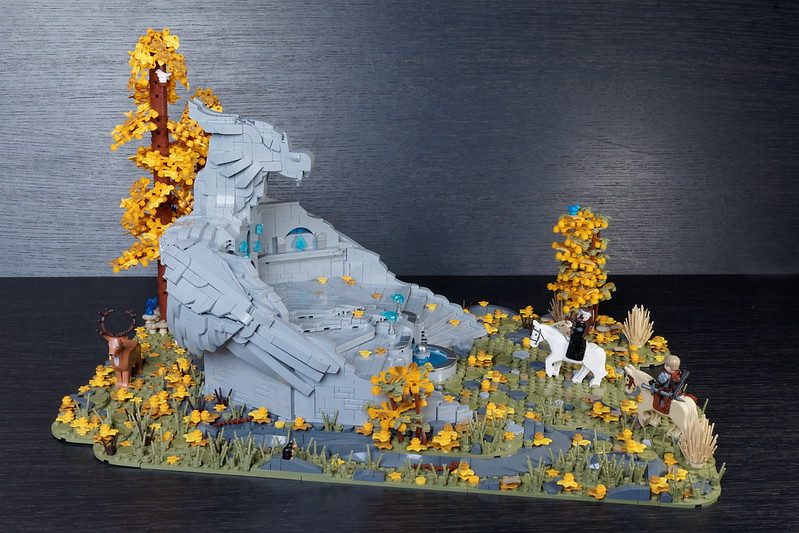This design is quite simple and easy to build, but gives a nice variation on standard studs up cobblestone techniques.
Below are the pieces you will need, mostly usual cobblestone parts besides the addition of 1×1 and 2×2 round bricks in bley and dark bley.

Start by figuring out the size of the area you want to fill with cobblestone.

And then tile that space completely. I used light bley tiles as that happens to be one of our most plentiful tile colors, but dark bley or black would also work very well, as a bright color could be seen between the cobblestones.

Next you will want to put together quite a few of the assemblies shown here: 1×1 round bricks topped with 1×1 round tiles, 2×2 round bricks topped with 2×2 round tiles, and two 1×1 round plates in black underneath grass stalks. The brick depth gives nice dark shadows between each assembly and adds to the appearance of individual stones.

This is where the fun begins, and the assembly of this design is strangely reminiscent of the board game Booby Trap. Just slide the various assemblies into place, making sure to get a nice mix of the 1 wide and 2 stud wide versions. Since the pieces are not attached, it’s very easy to incorporate grass stalks and putting them on two plates instead of a brick makes them look like they’re growing up through the cobblestone instead of just resting on top.

Continue filling in your area without worrying about any small gaps that occur. Those will be dealt with later.
You can also include a few 2×2 round jumper plates instead of some 2×2 round tiles if you want to attach minifigures or other details atop the cobblestone street.

When you nearly have the street section finished, slide 1×1 round brick with 1×1 round tile on top into any gaps large enough to fit them. Doing this throughout the cobblestone will shift everything slightly to give a snug fit. Though I wouldn’t recommend turning this design upside down, the brick depth keeps everything in place easily enough even when the build is tilted.

And there you have an alternative cobblestone design that allows for more random placement of round tiles and smooth incorporation of grass.
If you wanted to use a similar style for a build without a border, you could gradually lessen each assembly’s depth and attach any elements near the edge.

Thanks for reading, and we always appreciate hearing your feedback. There will likely be fewer tutorials than usual in November and December due to our participation in the Colossal Castle Contest, but on the plus side, there should be plenty of new builds!




